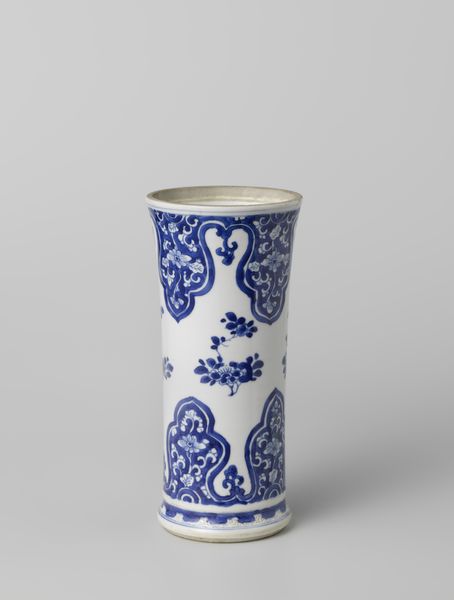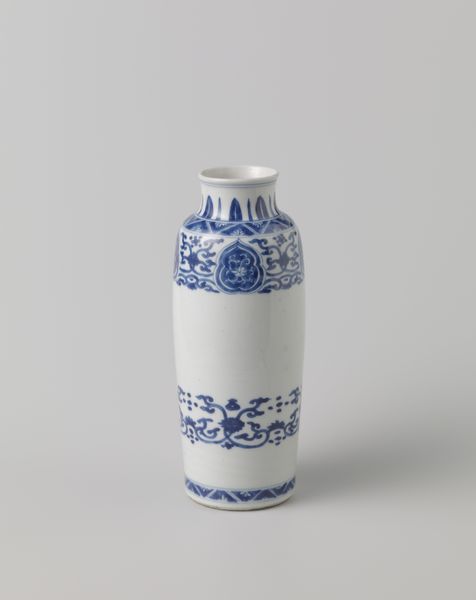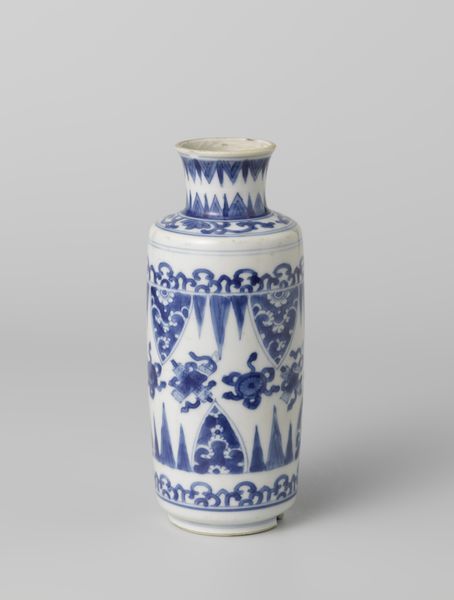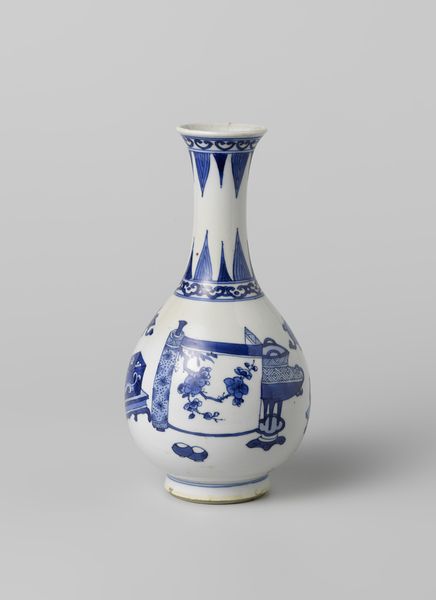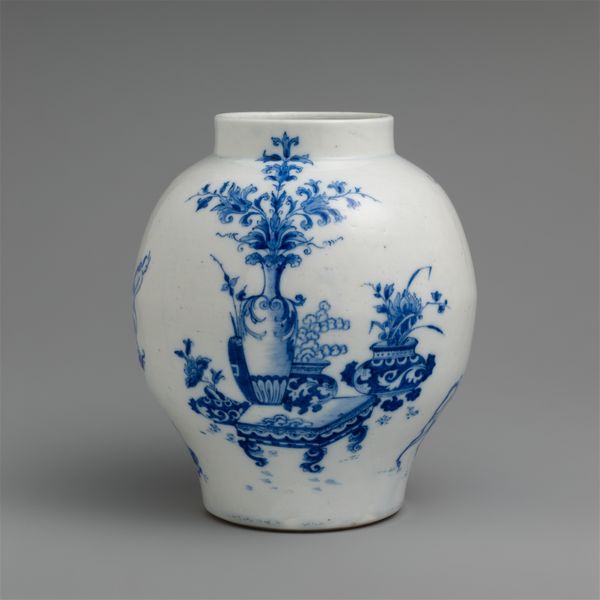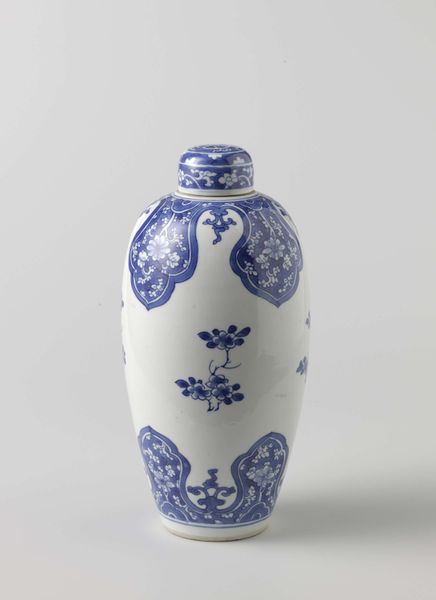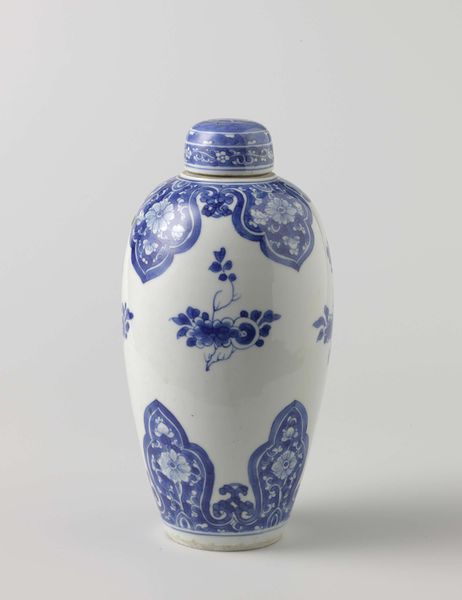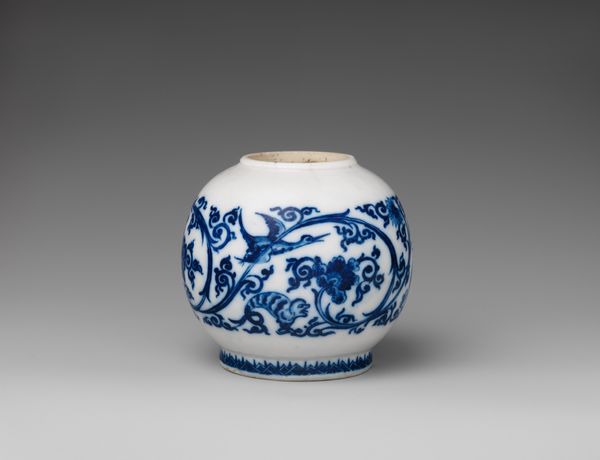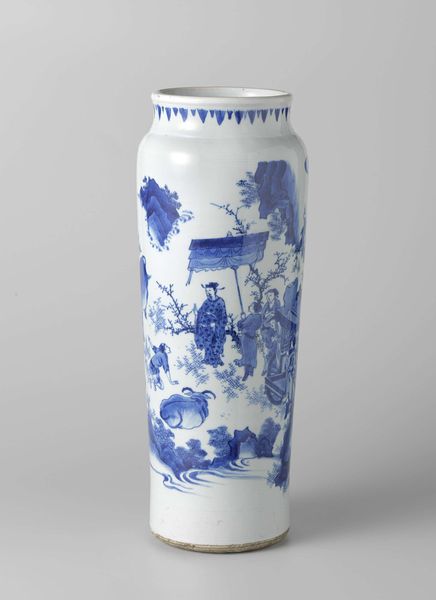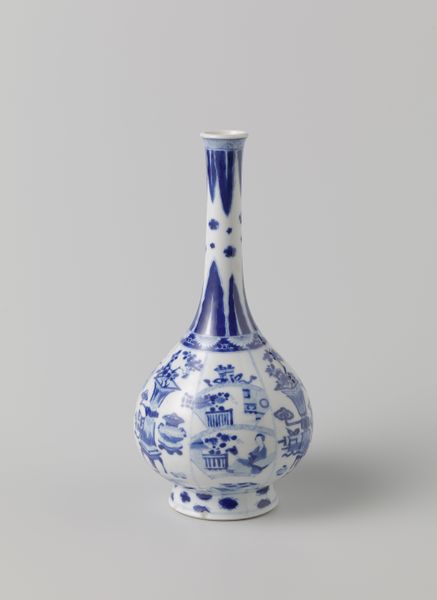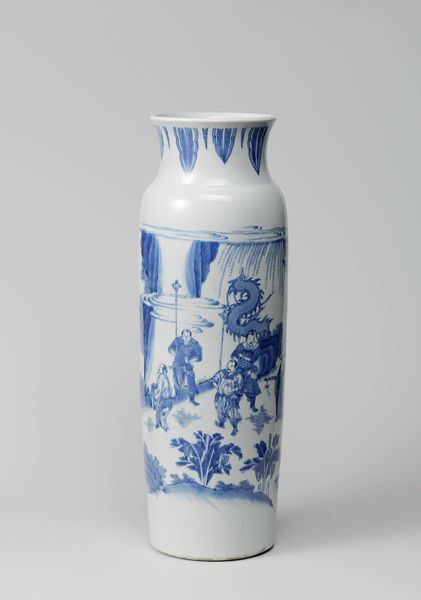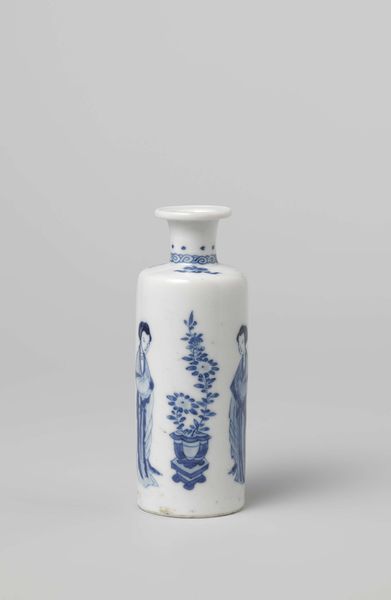
ceramic
#
asian-art
#
ceramic
#
ceramic
Dimensions: height 11.5 cm, width 6.8 cm, depth 5.9 cm
Copyright: Rijks Museum: Open Domain
This Bekervaas was made in Delft by De Porceleijne Claeuw, crafted from tin-glazed earthenware known as Delftware. The vase's surface displays a captivating blue and white palette. This aesthetic was born out of a fascination with Chinese porcelain, which flooded the Dutch market in the 17th century. Dutch artisans ingeniously imitated these coveted imports using local clay coated with a layer of tin glaze to achieve a similar whiteness, then painted with cobalt oxide for the blue decoration. Delftware became more than just imitation, it became its own industry, providing employment for many. Each stage, from potting and glazing to painting, involved skilled labour and the division of work, mirroring the dynamics of a growing capitalist economy. The mass production of Delftware democratized luxury, making decorative objects accessible to a wider audience. Looking at the Bekervaas, we are reminded that the value of an object lies not only in its appearance but also in its social context.
Comments
No comments
Be the first to comment and join the conversation on the ultimate creative platform.
